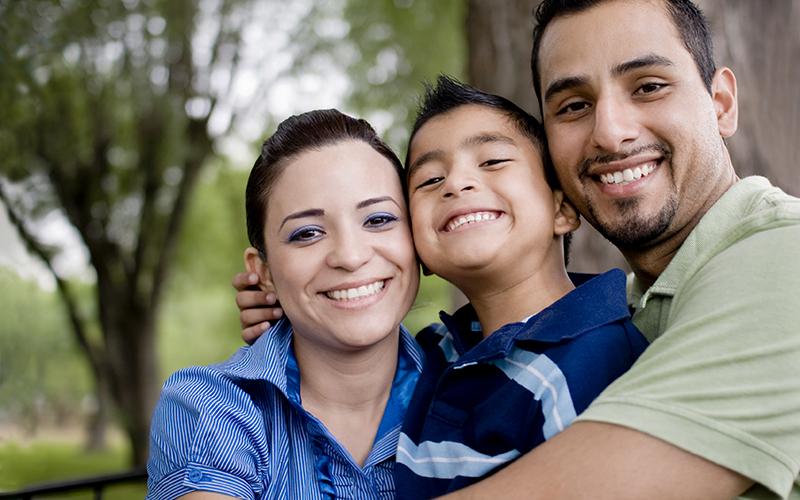Family Matters

About a year ago, the Demographics Research Group released a report entitled The Virginia Poverty Measure: An Alternative Poverty Measure for the Commonwealth. In the coming weeks, we’ll be revisiting this topic with another report, this time focusing on Virginia children living in economic insecurity.
One of the most fundamental things that distinguishes the Virginia Poverty Measure (VPM) from the Official Poverty Measure is who “counts” as part of a family unit. While applying a different definition of the family unit is only one aspect of improving the measure of economic (in)security, it is an important change because it lays the groundwork for an accurate account of income and expenses.
The official poverty rate is calculated by the Census Bureau using income limits applied to families depending on number and age of family members. Larger families have higher income limits–“poverty thresholds”–than do smaller families. Families headed by adults over the age of 65 years have lower income limits than families headed by younger adults. According to the Census Bureau, a family is one or more people living together and related by birth, adoption, or marriage.
To understand why broadening the definition of family unit sets up a more accurate measure of economic (in)security, consider the following situations that arise under the Official Poverty Measure:
- If a mother and child live with mom’s boyfriend–a man who is not the child’s father, but whose income and expenses factor into household finances–the household contains one two-person family and one “unrelated individual,” each of which is subject to different poverty thresholds.
- The case is similar for a same-sex couple living together with a child: If only one of the adults is legally considered to be the parent (often due to adoption laws in the state of residence), then that parent and child are a family, and the other adult in the house is an unrelated individual. As a result, different poverty thresholds will apply within the same home.
- This pattern also extends to homes without minors: The home of an unmarried, opposite-sex couple that also includes the man’s mother contains one family, and an additional unrelated individual. While all three might share resources and expenses, they are subject to different income limits for determining poverty status.
The Census definition of family also means that a child (under the age of 15) who is not related to the adult with whom she lives is not considered to be part of the adult’s family. As a result, many foster children are not officially counted as a members of the families that raise them.
Why does this matter? When not everyone who shares the same pool of financial resources is counted, we end up doing a poor job of measuring how much money is actually available to the people who use it. For example, by excluding unmarried partners or foster children, we may end up under-counting income, or underestimating additional expenses–or both.
The rising rate of cohabitation, increased frequency of child-bearing in non-marital relationships, and growing number of states legalizing gay marriage require a broader definition of family. Most adults living together as a couple–married or unmarried, of the same or opposite sex–share resources and expenses, at least in part. Children typically rely financially on the adults with whom they are living, whether they’re related or not. Limiting the measurement of poverty to strictly-defined families fails to acknowledge the modern reality of shared lives and finances outside of the confines of marriage or “traditional” parenting.
Our contribution
The Virginia Poverty Measure seeks to more realistically measure poverty for residents of the Commonwealth. In addition to capturing additional resources and expenses (such as SNAP benefits, tax liability, or medical outlays), one of the major features that distinguishes this measurement from the Official Poverty Measure is the expanded definition of “resource unit”. Like the national Supplemental Poverty Measure, the VPM resource unit includes the following people:
- All persons related to the householder and living at the same address;
- Cohabiting, unmarried adults and their family members;
- Any unrelated children cared for by the adults in the household (which allows foster children to be counted).
By considering all of these individuals, we set ourselves up to do a better job describing how resources are earned, consumed, and shared, and, as a result, are able to better measure financial distress.
In the coming weeks, we’ll be publishing more about this recently-defined measure of poverty in the Commonwealth. It’s a powerful tool that we can use to capture the realities faced by those in economic instability– whether they’re related by birth, marriage, adoption, situation, or choice.


